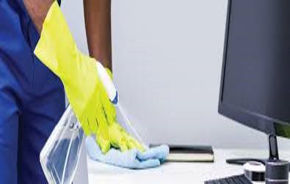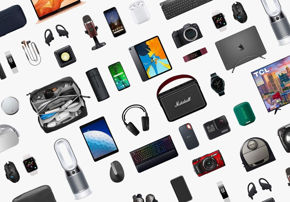Part 2 of 2. (Photo: Cory Feder)
continuing from a previous article...
It’s not a good idea to talk about single-use plastics around Kjell Olav Maldum.
He gets deeply annoyed by the term—because as far as he’s concerned, not a single plastic molecule should ever be used just once. “It’s not single-use! Just collect and recycle it, and this will be useful plastic!” he said when we first spoke on Zoom. Indeed, he considers traditional, petroleum-based plastics a critical part of modernity. “Try to run a hospital without plastic. Try to run a society without plastic. It’s not possible!” He’d rather we all focus on making sure almost none winds up in the garbage, the ocean, or the soil.
Maldum is a strange blend of personalities—part bombastic prophet, part matter-of-fact bureaucrat. One might be tempted to dismiss his pro-plastic stance, except that he runs one of the most successful plastic-recycling operations on the planet. In Norway, his company Infinitum manages a system to collect and recycle bottles made of polyethylene terephthalate, or PET, the sort that holds soda or water. PET is one of the easier plastics to recycle; it melts and reforms pretty readily. Even so, in the US, only a minority of PET bottles get recycled. The main PET industry association puts the recycling rate at 29 percent, while Greenpeace says it’s 20.9 percent. In Norway, though, Infinitum recycles nearly every damn bottle. How the heck did they achieve this?
With a combo of clever technology and deft public policy. As is often the case, the policy was the prime mover. Running a recycling program requires a lot of expensive labor and systems. You have to collect the plastic and separate it by type, which is expensive.
So in the late ’90s, Norway passed a law that forced somebody to pay for it—specifically, companies such as Coca-Cola that make plastic PET containers. Firms got hit with a new tax if they didn’t pay to collect and recycle used bottles. If the beverage companies can prove they’re recycling 95 percent as many bottles as they sell, they pay no tax. Otherwise, the less they recycle, the more they owe—until they’re paying “hundreds of millions of Norwegian kroner,” Maldum said (tens of millions of US dollars).
The bottle makers snapped to attention and began developing a system to get their used bottles back. In 1999, the companies founded Infinitum to manage collection. Maldum has been its CEO for the past 16 years. The company rolled out a wide network of “reverse” vending machines: Customers shove bottles in and earn a few coins back. Every bottle has a barcode specific to its maker. The machine scans the code and the shape of the bottle to track which company gets credit. (This labeling system is also why Norway has such reliable data on its recycling levels.) The bottles are squished and dropped into huge bags, and Infinitum hauls them to a sorting facility. The clear and colored bottles are sorted, crushed, and sold to a recycling firm, which processes the materials for other companies to then shape into new bottles.

Illustration: Cory Feder
Perfecting the system took years. Infinitum also demanded changes to bottle design that simplified recycling. A beverage company might, for example, attach its label with a stubborn glue that is hard to wash off. If Infinitum finds a bottle’s design is causing problems, it can deny the company credit in its system. To avoid getting hit with the tax, companies now run their bottle designs by Infinitum and fix any unrecyclable elements before they begin production. To recycle well, you need standardization. The tax gives Infinitum the power to enforce simplicity.
There’s a term of art for this whole system: reverse logistics. For the first 100 years of the plastics revolution, companies essentially sprayed products at customers—it was a one-way movement of atoms. Successful recycling requires doing this process in reverse, an entirely new set of skills. How do you get stuff back? What new economics, technologies, and policies do you need?
And what social engineering? Customers might decide, Eh, who cares about the 20 cents, and throw their bottles away. So Infinitum runs playfully encouraging ads. One shows a tennis player in a locker room hurling a bottle in the trash. A voiceover notes that making a new one takes as much energy as running a ball machine for an hour-plus. Suddenly he’s pelted with balls as he runs and ducks for cover.
Altogether, the strategy has worked. In Norway consumers are now so environmentally conscious that they’ve started actively choosing to buy beverages made from recycled bottles. Even though recycled PET costs anywhere from 1.5 to 1.75 times more expensive than virgin plastic, bottle makers buy it up and use it.
I wondered: Would it be possible to turn plastic bottles into a completely closed loop? Let’s imagine every country pulled a Norway—a politically hallucinogenic “if,” sure, but let’s go there. Could bottle makers keep on reusing those plastic molecules over and over, and never need virgin plastic?
Not entirely. When PET molecules are repeatedly recycled, they start “yellowing and darkening,” Michael Joyes, the sustainability director for Petainer, a European bottle maker, said. Eventually they turn black. You can lighten the stuff with “anti-yellow” chemicals or mix it with virgin materials. Or you can use these older plastics to bottle up drinks like Coke. “The inside’s dark too, so people don’t mind so much,” Joyes said.
Even so, repeatedly recycled PET becomes less useful over time. The polymer chains in the plastic get shorter. Clever chemistry hacks can lengthen them, and some recyclers predict recycled PET can be used up to eight times. EU legislation is mandating that by 2030, 30 percent of PET in bottles be recycled—and Joyes predicts that some countries and brands will push much higher, to 70 or even 100 percent recycled PET.
I was impressed by Infinitum’s success. But PET bottles are, chemically and structurally, the easiest plastic to recycle. They basically want to be reborn (until they don’t). Many other forms are more truculent. Consider food containers: They can consist of several plastics with different recycling processes. Pricey! Recyclers are experimenting with “chemical” recycling, where a bunch of different plastics are tossed into a vat and the various molecules separate out like the layers in a salad dressing. Thus far, though, chemical recycling is energy-intensive. Plastic would be recycled, sure, but it would cost a lot and emit mountains of CO2, trading one environmental problem for another.
Maldum is more optimistic. He thinks Infinitum’s strategy for PET recycling could work for all plastics. The trick is to redesign the packaging so just about anything can be tossed into a reverse vending machine. “Why do you need to use a tray for meat? You can use a tube,” he said. It was an intriguing idea, but I couldn’t quite picture the wild welter of food wrappers all somehow reconfigured for a vending machine. Would people be as willing to carry empty tubes with raw-meat residue to the grocery store to shove in a machine?
What’s more, recycling of any sort has its own searing critics. Some American environmental groups regard plastic recycling as a naked form of greenwashing. They doubt recycling rates will ever escape the low digits in the US and outside Europe—because most politicians won’t enact serious penalties, and the quality of recycled plastics will be too low. And because plastic might be a big market for petroleum companies in the future, those corporations will likely fight hard to keep society hooked on it.
For straight-edge enviros, then, the only serious way to reduce single-use plastics is to just stop. Stop. Using. Them. Entirely.
I met Jason Hawkins at Field & Social, a lunch joint in downtown Vancouver, British Columbia, known for its salad bowls. He picked the spiced Thai bowl; I chose the Thai peanut and chicken bowl. We ordered them to go.
Normally, of course, takeout is served in a plastic or paper container. Field & Social, though, uses a service offered by Hawkins’ “circular economy” startup, Reusables. Customers can ask to get their food in a stainless steel bowl or cup with a sleek silicone lid. When they’re done, they can drop it off—unwashed!—at any store that participates in Reusables’ network. (There are currently 75.) Each container has a QR code, so Reusables can track which customer has which container. If they don’t return it, they have to pay for it. Charges are up to $25 per unreturned container, though customers get refunded if they later bring it back. But in the 150,000 meals Reusables had served by the time Hawkins and I met, more than 98 percent of the containers ultimately came back.
The trick behind getting people to truly reuse things? Making it as easy as possible. “People have a lot of things going on in their life,” he told me as he tucked into his meal. “You’re hungry, you want a salad, you should just get a salad! It’s not up to people to be sustainable—it’s up to businesses and government to create the right infrastructure.”
Tall and angular, Hawkins has a jittery energy and a broad grin behind his scruffy blond beard. He got the idea for Reusables during the Covid pandemic, as everyone hunkered at home and the use of takeout exploded, producing a mountain of waste. Hawkins was working at an online organic-food grocery-delivery service called Spud and talked about the takeout boom with Anastasia Kiku, a college-student intern who’d immigrated from Russia. Both were repelled by how much plastic takeout was generating. It made them think: Maybe the best way to cut back on single-use garbage is just to rewind. Before plastic came along, our forebears used sturdy bowls and plates and washed and reused them. They “wasted nothing,” as Hawkins said. Maybe our grandparents had it right.
The duo concocted the idea of Reusables, and in late 2021 quickly built a prototype system. Customers would pay $5 a month to use as many containers as they wanted, and restaurants would pay a fee too. Hawkins and Kiku hired a company to pick up the dirty dishes from restaurants and clean them. By early 2023, they’d signed up more than 100 restaurants and food stores in Vancouver and Seattle.
Early users loved it. Many restaurant owners, it seems, truly loathe single-use take-out containers. Often it’s because, like those store employees at J.Crew, they hate being neck-deep in waste. When I spoke to Stewart Boyles, Field & Social’s director of operations and regional chef, he described attending conventions to scout new take-out containers. “You go to these expos where it’s just, like, a showroom for garbage. ‘Let’s have an event where we show future garbage to people!’”
Nonetheless, by last fall, Hawkins and Kiku were finding it harder to get new customers. Sure, die-hard environmentalist diners loved Reusables and were happy to pay for the service. But they were only a tiny minority of the population. The lesson, Hawkins concluded, is that the only way to force a mass change in behavior—and you could see this coming, I guess—is with regulation. A community has to first get serious and ban single-use take-out containers.
So the founders pivoted to the communities that were, in fact, doing that: universities.
Simon Fraser University, a 37,000-student institution on the outskirts of Vancouver, banned single-use plastics in 2021. It needed a system for students who wanted to grab a meal from the cafeteria and eat it in their dorm room. Sid Mehta, the university’s senior director of ancillary services, knew about the Reusables system; he called up Hawkins to hire them.
“The students,” Mehta told me, are hungry for this sort of system: “They’re already there.” For a simplified checkout system, Hawkins’ team attached a rugged RFID chip to each container: Presto, students could now check one out by waving it near a checkout terminal. Returning would be just as easy. To create an automated return bin, Reusables hired Jack Gralla, a lanky self-taught hardware hacker—he’d worked on everything from “solar roadways” to robotics. Gralla showed me the prototype, a bin with a lid crammed with micro-controllers (“There’s three computers inside”). It opens only if it detects an RFID chip, to prevent people from dropping in, say, trash or dog poop.

Photograph: Tonje Thilesen
By the spring of 2024, the new system was working smoothly at Simon Fraser. Three return bins had collected containers from 7,389 meals. The university funds the system, and students only pay a penalty if they fail to return a dish. (So far, 97.5 percent have been returned.) Mehta has ordered more smart return bins to scatter around campus, and he expects they’ll process tens of thousands of meals in the next academic year.
Hawkins has inked deals with Pomona College and the University of Victoria and is in talks with a dozen others. With 27 million students, universities spend $24 billion a year on food. They can quickly establish their own no-plastics policy. A college, Hawkins notes, is its own fiefdom—“literally like its own city, right?”
A few other places are following suit. In June 2022, Canada passed a ban on many types of single-use plastics, including hot-food takeout from major grocery chains. A fight over the ban is playing out in the courts.
Jo-Anne St. Godard was watching this with interest; she’s the head of the Circular Innovation Council, a nonprofit that advocates for reducing single-use materials in Canada. She began talking to Ottawa’s major grocers and persuaded three—including Walmart—to try out the Reusables system for two years. They’re rolling it out this summer to several grocery stores.
Godard regaled me with the hurdles of getting the system designed: The grocers had to agree to standardized containers. (“Herding cats,” she says.) Everyone’s intense about ensuring the containers are meticulously cleaned. (“We get one person sick, this is over.”) And grocers wanted the containers to be microwavable, because people like to heat up their meals at home. RFID tags would get nuked, though, so Hawkins went back to Reusables’ QR code system.
Both Godard and Mehta argue that systems like Reusables’—companies like it are popping up worldwide—will be a staple of the future. Like every other system for reducing plastics, though, they will really take off only if policy pushes it along. “The conversation is shifting from shaming and blaming bad behavior to, ‘Oh, this is an economic development opportunity, and there’s money to be made,’” Godard said. The setup is basically the same as for the universities—Ottawa retailers and the Canadian government pay to run the system, and customers pony up only if they fail to return a container. Will retailers stay invested in the long run? Godard believes so. After all, they’re currently paying $700 million in annual fees to support the recycling program, so in the long run, “the more you put into reuse, the less you have to pay” for that very expensive service.
It’s not like reuse systems are perfect, mind you. A ton of electricity goes into making all those aluminum containers, and then some more goes into cleaning them every week. The CO2 balance evens out, it appears, only when these systems are in wide use. An analysis last year by McKinsey estimated that one might need to reuse a takeaway food container 200 times before its emissions are equal to those from creating and using 200 one-shot containers.
But of all the ways I saw to reduce single-use plastics, projects like Reusables had the fewest technical pitfalls. They don’t require major breakthroughs, just clever patching-together of existing tech. And I have little doubt society could adapt to reusable packaging. Hell, when our grandparents did it, they didn’t have RFID tags and micropayment systems. They just put the milk bottles back on the front porch. Surely modern technology is up to the challenge.
I realize it would be easier to imagine an unplastic future if we could point to one clear answer and one way forward. But, as some anti-plastic advocates told me, the diversity of these approaches is actually good. It spreads our bets. Plus, the solutions interlock. Of course, this plan is only a partial solution. Some plastics may be especially hard to quit, like the thin films that keep medical products sanitary. And then there’s the plague of microplastics, those infinitesimal bits that end up in our bodies, the soil, everywhere. A big chunk of them come from car tires and synthetic clothing—a whole other cluster of headaches. But the point is to move on all fronts toward fewer and fewer.
What’s next is, really, up to us: pressure on our elected officials, from presidential candidates on down to local city council members, to set up concrete targets and bans. Firm rules, market signals—that’s what will push companies to stop relying so heavily on one-time packaging, and let innovative projects and alternatives grow until they’re part of the fabric of daily life.
We may be up for that task. A survey last year by the conservation group Oceana found that strong majorities of Americans—affiliated with both major parties—supported reducing all single-use items, from bags to bottles to straws and more. No matter how many times or ways the people were asked, the majority always agreed: It’s time.
Getty Images, Reusables, Sway, Infinitum (illustration photo references); Getty Images (photograph backdrops)











